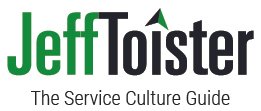Advertising disclosure: This blog participates in the Amazon Services LLC Associates Program, an affiliate advertising program designed to provide a means to earn fees by linking to Amazon.com and affiliated sites.
Employees at The Ritz-Carlton have a reputation for amazing service.
You might think their success comes from having a great product, hiring great people, or even a great training program. All of those help, but none are the magic ingredient.
The real secret is amazingly simple.
Ritz-Carlton employees, called associates, spend time every single day reviewing and discussing one of the hotel chain's gold standards. These standards lay out the values and operating philosophy that have helped make it famous.
The gold standards themselves aren't the secret. Those can easily be found online.
The secret is the daily review. The Ritz-Carlton has developed an obsession for guest service by talking about guest service every single day.
Here's how you can do the same thing to keep your employees customer-focused.
Why do daily reviews work?
Think back to when you were in high school. There's a good chance you had a combination locker for books or physical education class.
Back then, you could open the locker in seconds without thinking. The combination was seared into your memory from daily practice.
Now imagine you are standing in front of the same locker today. The combination is still the same as it was back in your high school days. Could you open it?
More than 90 percent of us could not.
That's because a lot of knowledge and skills are "use it or lose it." Our brain makes it easy to access information we use frequently, while information we hardly need gradually recedes to the background.
Customer service skills are the same way.
It's not uncommon for employees to attend a customer service training class and then boost their performance for a week or two afterwards. Yet without ongoing reinforcement, they inevitably come back down to earth as the gravitational pull of their old habits stamps out any new ideas.
How The Ritz-Carlton uses daily reviews
Associates at every hotel gather for a daily meeting called a lineup. The meeting is short, generally just ten minutes, and is carefully orchestrated.
Four topics are on the agenda:
Gold standard of the day
Share WOW stories about great guest service
Celebrate birthdays and service anniversaries
Discuss property-specific information, such as special events
Notice the gold standards are at the top of the agenda.
The same gold standard is chosen at all Ritz-Carlton hotels each day. For example, one day might focus on The Ritz-Carlton motto, "We are ladies and gentlemen serving ladies and gentlemen."
Associates discuss the standard and talk about how they apply it on the job. That discussion does two very important things:
It reminds associates, so they remember to apply it.
It deepens their understanding of the standard.
That daily review helps the gold standards become just like opening an old high school locker—associates can use it without even thinking.
What can you do to keep things fresh?
Some leaders worry that daily reviews will soon grow stale.
One manager confided that he ran out of things to talk about, and felt a weekly meeting worked better. Other leaders have told me they worry that employees will start tuning them out when they repeat a reminder that was previously covered.
There are three keys to keeping things fresh:
Relevance
Brevity
Ownership
The reminders should be relevant to what's going on in the business and the challenges your employees face. So "remember to smile" might fall flat as a generic reminder, but a discussion about how you stay upbeat and positive at the end of a long shift could be more relevant.
The reminders should also be brief. The daily meetings at The Ritz-Carlton last about ten minutes. My Customer Service Tip of the Week emails are designed to be read in just five minutes.
Finally, employees should take ownership. Rather than announcing each reminder, try giving the responsibility to different employees. It also helps to make it a discussion where employees share their own successes, challenges, and questions.
How to implement your own daily reviews
Start with what you want to review.
In Getting Service Right, I profiled a fast food restaurant called Pal's Sudden Service that regularly requires employees to demonstrate proficiency with basic procedures. Other organizations, like The Ritz-Carlton, focus on culture.
Here are some ideas you might use:
Your mission, vision, values, or customer service vision
Customer feedback
Operating procedures
Next, create a regular schedule. Ideally, you integrate the reminders into things you're already doing, like a team huddle. It becomes much harder to implement a daily schedule if its extra work.
Finally, stick with it! The reminders only work if you can make them a habit.
I researched customer-focused organizations while writing The Service Culture Handbook. One thing leaders in these companies did really well was talk about customer service all the time. That one thing can keep your team more customer-focused than the competition!



